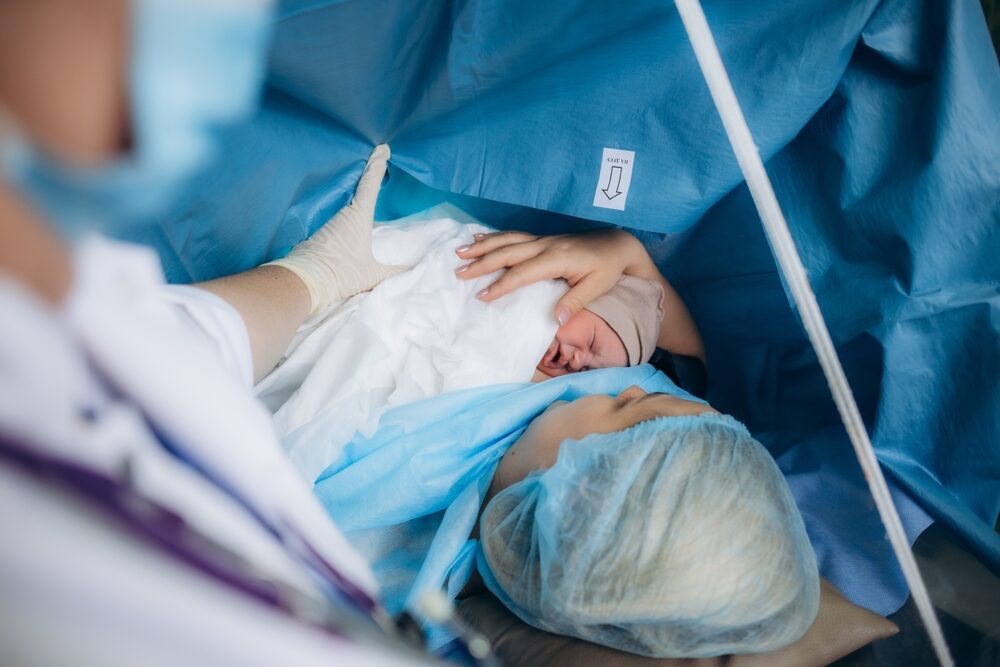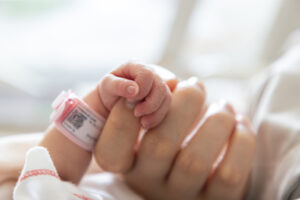
A new study has found an association between nurse staffing shortages and cesarean section rates — research that could explain why some birthing mothers are forced into surgery instead of having the option to labor the way they desire. A C-section can be vital in an emergency scenario, but it is a significant procedure linked with long-term health complications. Some hospitals and healthcare organizations have introduced initiatives to reduce cesarean birth among low-risk women for this reason. Pregnant women are told to exercise, eat a nutritious diet, and educate themselves on labor and delivery outcomes ahead of birth. But preparation can only go so far, and if a hospital doesn’t have enough nurses, C-sections may be unavoidable for patients.
The cesarean birth rate is on the rise in the U.S. and is expected to continue to increase — in Washington D.C., it is higher than the national average. The study examined a survey that asked nurses about staffing at their hospitals. Then, researchers compared the data to the C-section rates at the facilities. The research found that hospitals with nursing ratios aligned with national standards were less likely to conduct C-sections. According to the Association of Women’s Health, Obstetric, and Neonatal Nurses, the recommended national ratio is one nurse to one patient during labor, two nurses during birth, and one nurse during postpartum recovery. These nurses provide crucial patient care, offering medical care and emotional support when needed. Many hospitals face nursing shortages, making it impossible for each patient to receive the attention they need. When nurses must balance multiple patients at a time and cannot meet the ideal patient ratio, pregnant women are put at risk when there’s a higher chance of labor and delivery negligence occurring.
Several regions in the U.S. are experiencing a nursing shortage because there aren’t enough RNs in these states. Even if your state isn’t facing a nurse shortage, you may still be at risk. Hospitals don’t always hire the needed number of medical professionals to cut costs, which can create a shortage, regardless of how many nurses are willing to work. Staffing deficits can have serious consequences. Understaffed hospitals are at higher risk for medication error, nurse burnout, and increased mortality rates. In labor and delivery settings, a low nursing rate can raise the chance of birthing complications due to medical malpractice. Solving the shortage crisis will take effort, but if hospitals want to prioritize patient care, hiring more nurses and giving patients a higher chance of uncomplicated births is essential. Doing so will benefit everyone — facilities, nurses, and patients.
C-Section Complications
During a C-section, a surgeon makes an abdominal incision and cuts through seven layers of tissue. Even a cesarean birth with no complications takes weeks of recovery time. Women may need opioid prescription drugs to manage pain levels, and the incision scar can cause irritation for months. One study found that a C-section can increase the chance of needing a hysterectomy years after the procedure, and other research has discovered a higher risk of pelvic problems. While some C-sections are unavoidable, especially when a mother or baby is in distress, it’s understandable why some may prefer a vaginal birth.
Blood loss: C-section patients usually lose more blood than those who deliver vaginally, but the amount is still low enough that it doesn’t cause complications. But sometimes, cesarean births will lead to excessive blood loss, also known as postpartum hemorrhage. The loss is treated with blood transfusions if medications fail to work.
Infection: An infection can develop if bacteria enter the healing incision wound after a C-section. It’s a common cesarean birth complication affecting up to 15% of women who undergo the procedure. Mild infections can be cleared up with antibiotics, but some new mothers with severe cases need surgery to treat the infection entirely.
Blood clots: Blood clots can occur regardless of how someone delivers, but having a C-section makes it nearly twice as likely to experience the condition. Clots can develop in the arms and legs and travel to the lungs, quickly becoming life-threatening pulmonary embolisms. Blood clots are responsible for 10% of maternal deaths in the U.S.
Future difficulties: If someone gets pregnant again after a C-section, they may face increased complications when considering how to give birth the second time. Attempting a vaginal birth after a C-section, commonly known as VBAC, comes with risks. There’s an increased chance of uterine rupture and placenta accreta, serious conditions that can lead to life-threatening injuries for both the mother and baby.
Bladder damage: Bladder injuries occur in less than 1% of C-sections, but they can cause severe complications. Damage typically happens when a surgeon accidentally cuts the bladder when separating levels of tissue. Once members of a medical team notice a bladder injury, they work to repair it, but it may take time to fully recover.
Fetal issues: Babies born via cesarean birth are more likely to develop breathing problems immediately after birth. Additionally, a small percentage of babies are nicked during the surgery, causing avoidable injuries. C-section babies are more likely to require NICU admission and may be more likely to face health problems as children.
After a Birth Injury
By some estimates, one-third of C-sections are medically unnecessary. These procedures are lifesaving, but they can also be needless. Healthcare systems receive higher reimbursement for C-sections than vaginal births, so there could also be a financial incentive at play. If you or your baby suffer birth injuries during labor and delivery, you may face unexpected medical bills and more time spent away from work than anticipated. Dealing with emotional distress and experiencing pain and suffering is also common after a birth injury. Much like C-sections, many birth injuries are preventable. If hospitals emphasize appropriate staffing ratios, they may reduce their cesarean birth rate, reducing the risk of complications.
C-sections in Washington, D.C. are climbing, and many of these surgeries are preventable. If you’ve suffered a birth complication after a C-section, you may be eligible to seek legal action against the hospital that performed your procedure. Nursing shortages are ultimately avoidable, and if hospitals prioritize hiring an adequate number of medical professionals, they’ll make their facilities safer for patients. However, hospitals don’t always act with your best interests in mind. That’s why it’s essential to find a law firm with decades of experience fighting for birth injury victims who can help evaluate your case. Paulson & Nace has expert knowledge regarding birth injury lawsuits, and we can investigate your case and advocate for you to receive fair compensation. Call us at 202-463-1999 or contact us online to learn more.
@thumbnail.jpg)
Both an Emory School of Law graduate and MBA graduate of Goizueta Business School at Emory, Chris Nace focuses his practice on areas of medical malpractice, drug and product liability, motor vehicle accidents, wrongful death, employment discrimination and other negligence and personal injury matters.










Comments for this article are closed.